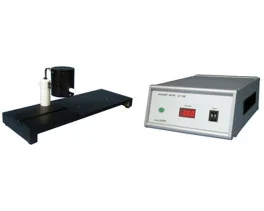Authors
C. Mombereau, K. Kaupmann, W. Froestl, G. Sansig, H. van der Putten et al.
Lab
Neuroscience Research, Novartis Institutes for BioMedical Research, Novartis Pharma AG, Basel, Switzerland.
Journal
Neuropsychopharmacology
Abstract
Although there is much evidence for a role of the inhibitory neurotransmitter g-aminobutyric acid (GABA) in the pathophysiology of anxiety and depression, the role of GABAB receptors in behavioral processes related to these disorders has not yet been fully established. GABAB receptors are G-protein-coupled receptors, which act as functional heterodimers made up of GABAB(1) and GABAB(2) subunits. Using recently generated GABAB(1) / mice, which lack functional GABAB receptors, and pharmacological tools we assessed the role of GABAB receptors in anxiety- and antidepressant-related behaviors. In the light–dark box, GABAB(1) / mice were more anxious than their wild-type littermates (less time spent in the light; reduced number of transitions). GABAB(1) / mice were also more anxious in the staircase test. Conversely, acute and chronic treatment with GS39783, a novel GABAB receptor positive modulator, decreased anxiety in the light–dark box and elevated zero maze tests for anxiety. On the other hand, GABAB(1) / mice had decreased immobility (antidepressant-like behavior) in the forced swim test (FST). These behavioral effects are unrelated to alterations in locomotor activity. In confirmation of the genetic data, acute and chronic treatment with CGP56433A, a selective GABAB receptor antagonist, also decreased immobility in the FST, whereas GS39783 did not alter this behavior. Taken together, these data suggest that positive modulation of the GABAB receptor may serve as a novel therapeutic strategy for the development of anxiolytics, whereas GABAB receptor antagonism may serve as a basis for the generation of novel antidepressants.
BIOSEB Instruments Used
Tail Suspension Test - Wireless (BIO-TST5)
Source : http://loinen.i2p.to/hiveboard/picproxie_docs/000499541-NPP_GabaB_2004.pdf

 Douleur - Allodynie/Hyperalgésie Thermique
Douleur - Allodynie/Hyperalgésie Thermique Douleur - Spontanée - Déficit de Posture
Douleur - Spontanée - Déficit de Posture Douleur - Allodynie/Hyperalgésie Mécanique
Douleur - Allodynie/Hyperalgésie Mécanique Apprentissage/Mémoire - Attention - Addiction
Apprentissage/Mémoire - Attention - Addiction Physiologie & Recherche Respiratoire
Physiologie & Recherche Respiratoire




































 Douleur
Douleur Système Nerveux Central (SNC)
Système Nerveux Central (SNC)  Neurodégénérescence
Neurodégénérescence Système sensoriel
Système sensoriel Système moteur
Système moteur Troubles de l'humeur
Troubles de l'humeur Autres pathologies
Autres pathologies Système musculaire
Système musculaire Articulations
Articulations Métabolisme
Métabolisme Thématiques transversales
Thématiques transversales Congrès & Meetings
Congrès & Meetings 